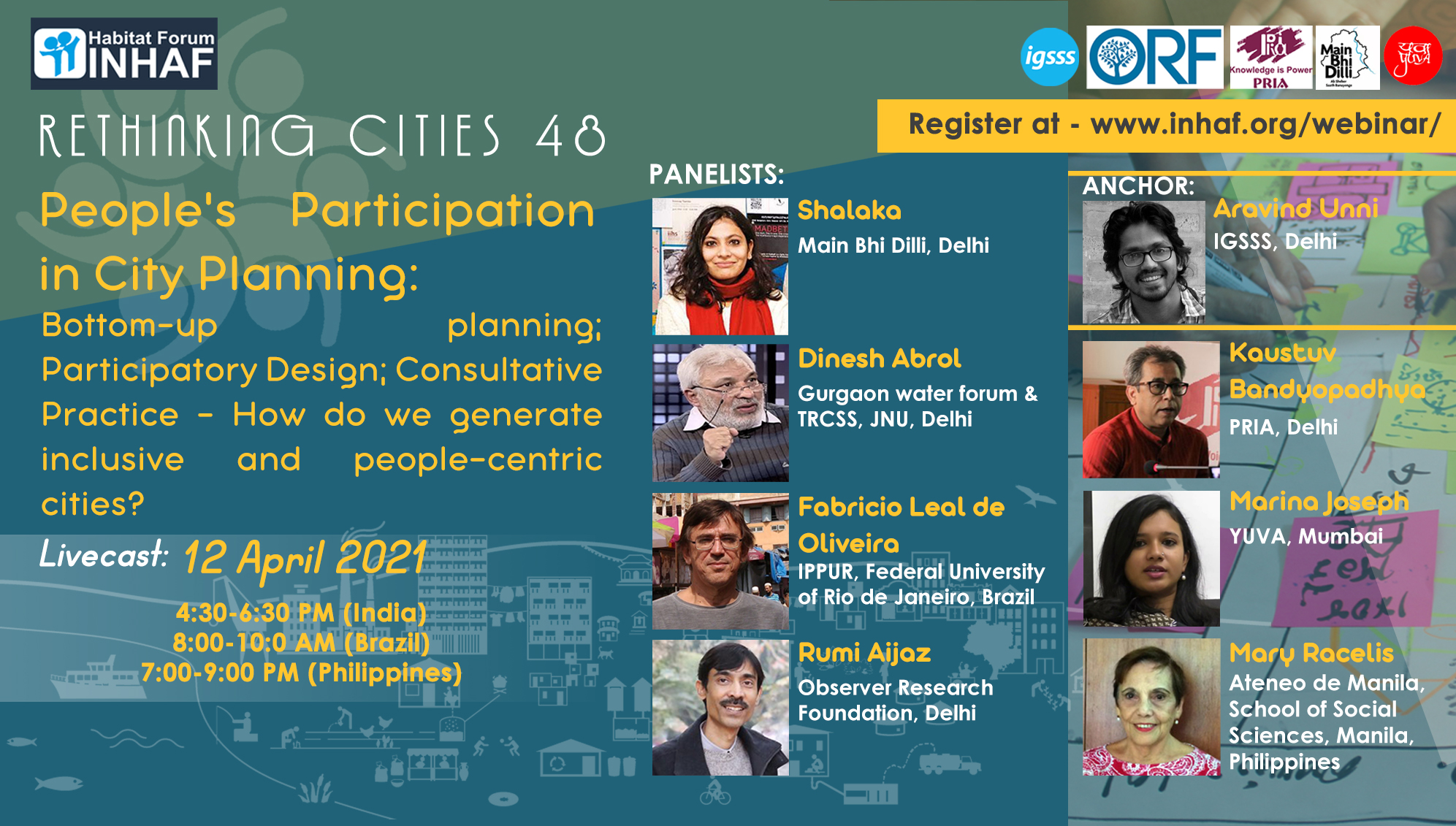
Local Time
- Timezone: America/New_York
- Date: Apr 12 2021
People’s Participation in City Planning: Bottom-up planning; Participatory Design; Consultative Practice – How do we generate inclusive and people-centric cities?
Delhi Development Authority is in the process of preparing the new master plan which will be applicable for a 20 year period from 2021- 41. As of March 2021, Delhi Development Authority (DDA) has organized very limited online public consultations where citizens, CSOs, and campaigns could raise their voices. These public consultations are a great opportunity to raise key concerns and challenges that the MPD 2041 must urgently address. But these select consultations with a few groups are not representative of the various demographic needs of Delhi. For long, formal planning processes have remained confined to a limited group of government officials and technical experts who make critically important planning decisions without meaningfully consulting multiple socio-economic groups like the urban poor, differently-abled, gender fluid, and marginalized communities. These groups then continue to not only lack a say in the way the city is planned but are also unfairly viewed as lesser contributors to the growth of the city.
A recent study by the Main Bhi Dilli campaign and Indo-Global Social Service Society (IGSSS) titled ‘Assessment of People’s Awareness on Delhi’s Master Plan 2021-41’ revealed that 80 per cent of the residents have not heard about Delhi master plan, and 0 per cent know how to use or access a land use map.[1] They have no awareness of how to give suggestions on the master plan, nor the knowledge of which agency prepares the plan. None of the respondents have ever read the last master plan report, and the majority think it is the Delhi Government and not the Delhi Development Authority (DDA) which makes the master plan. This case is not particular to Delhi; it is typical of any other city in the Global South. Public engagement in urban planning processes is viewed as a hurdle and is usually awarded minimal tokenistic consultations. The mandatory ‘suggestion and objection phase’ does not create adequate spaces for people to critique, offer feedback or share their collective needs and aspirations. Consequently, it becomes implausible to include or alter anything at the penultimate stage. The COVID-19 pandemic has revealed that over the last hundred years of urban planning (or the lack of it), exclusively expert-led city planning has worsened social inequalities and made cities increasingly unlivable, exclusionary, and untenable for workers that build the cities.
Public engagement thus is critical in the course correction that is required in the process of making our cities address the needs of urban marginal groups and emerging ecological challenges. Although from a diverse socio-cultural milieu, examples from the Global South offer many interesting lessons for us to learn and adopt. It is in this context that INHAF, IGSSS, and the Main Bhi Dilli campaign would like to host a webinar with the purpose of learning about and exploring the best people-centric approaches and practices from around the world that have been integrated into past urban development plans. The discussion will be on the ways and methods of how the cities have involved people and their aspirations in their city planning preparation process. This will help Delhi and many other cities in India to learn, implement and institutionalize public participation practices with the aim of making Indian cities more inclusive and sustainable.
[1] https://igsss.org/researchpublication/assessment-of-peoples-awareness-on-delhi-master-plan-2021-41
